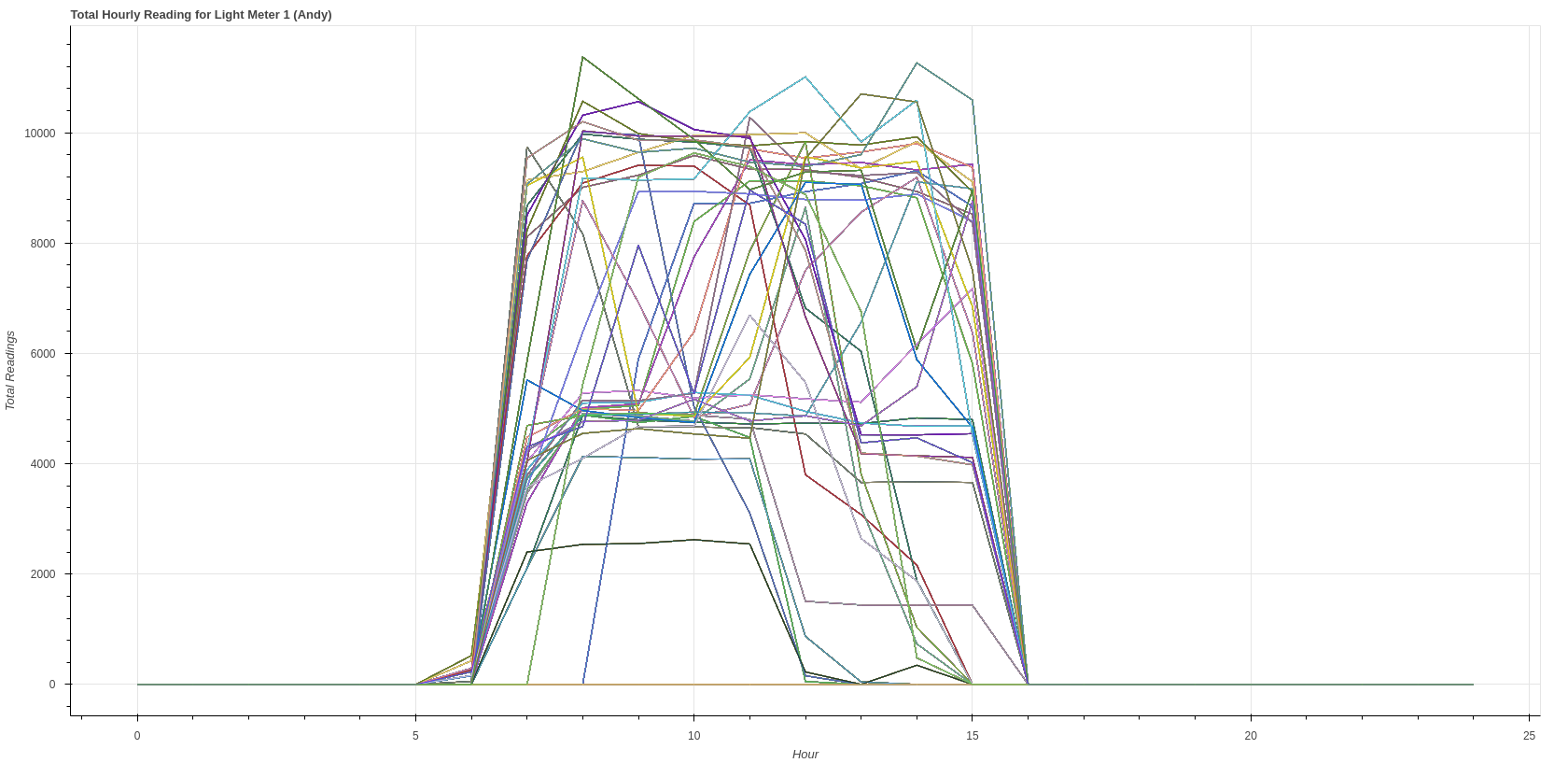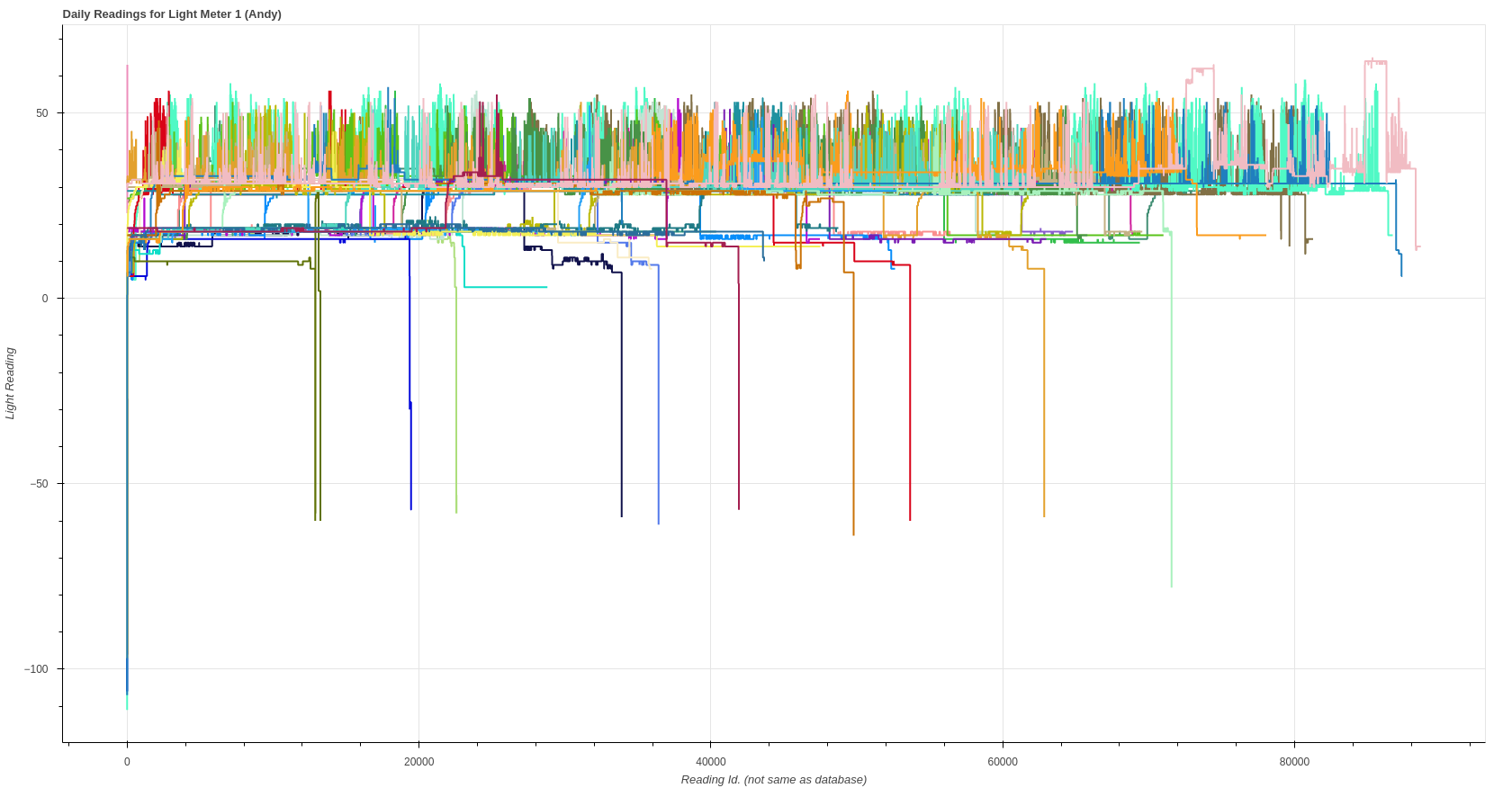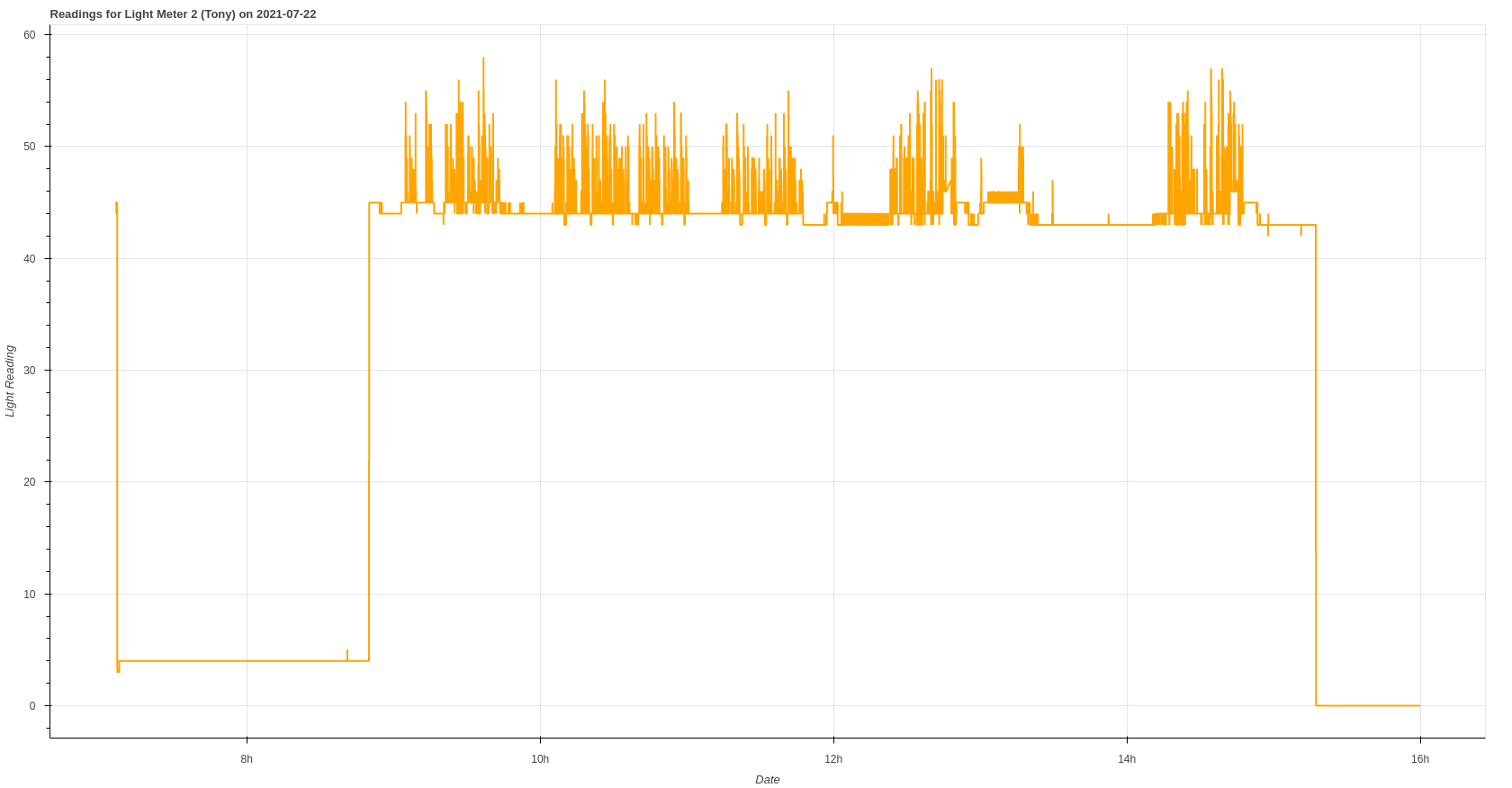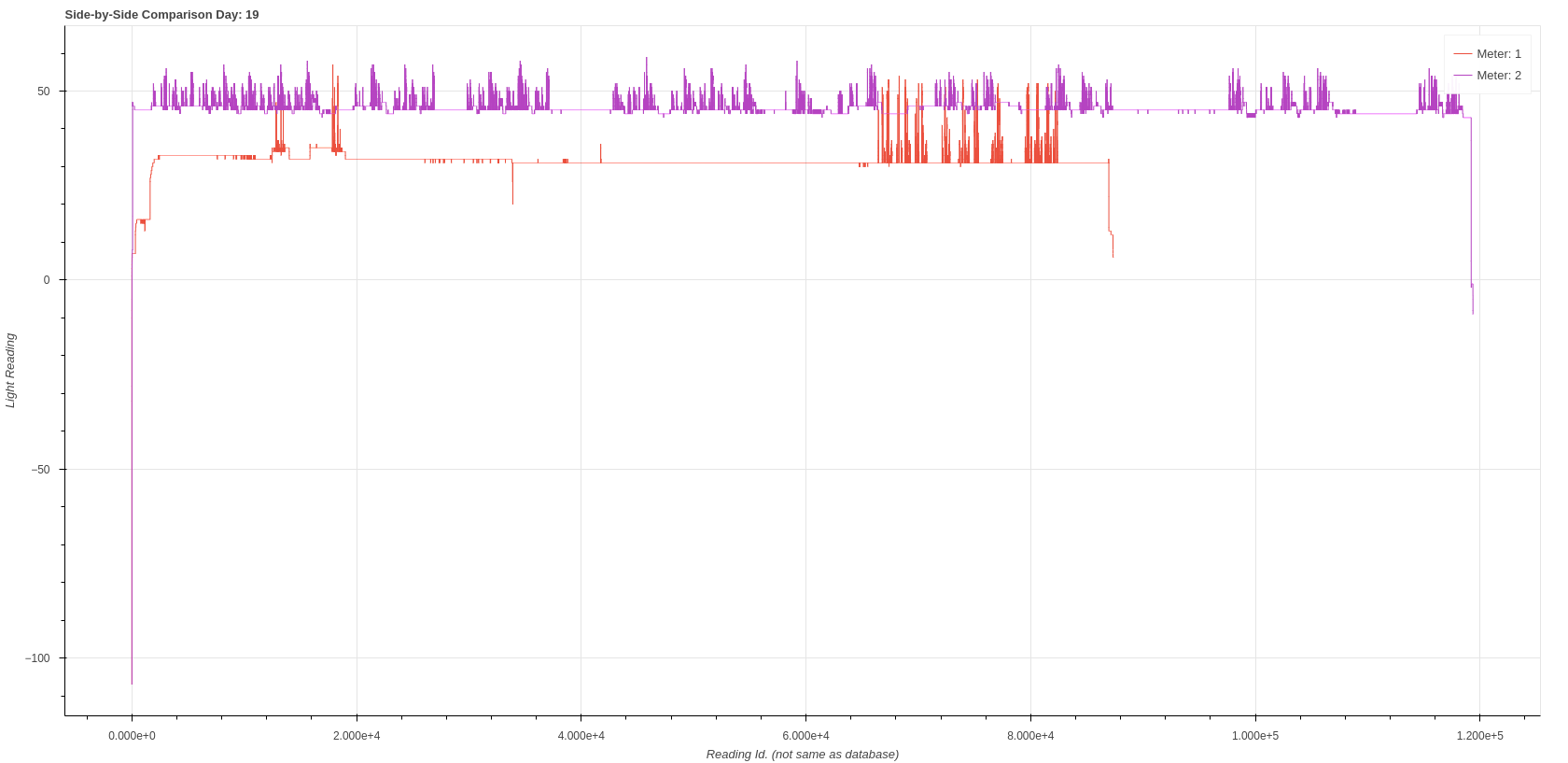|
|
1 year ago | |
|---|---|---|
| assets | 1 year ago | |
| data | 1 year ago | |
| .gitignore | 1 year ago | |
| LICENSE | 1 year ago | |
| README.org | 1 year ago | |
| dailies-overlayed.py | 1 year ago | |
| dailies-side-by-side.py | 1 year ago | |
| daily-breakdowns.py | 1 year ago | |
| daily-totals.py | 1 year ago | |
| day-to-day-comparisons.py | 1 year ago | |
| lm1-hourly-totals.py | 1 year ago | |
| lm2-hourly-totals.py | 1 year ago | |
| requirements.txt | 1 year ago | |
| separator.sh | 1 year ago | |
| sql-statements.sql | 1 year ago | |
| totalilator.sh | 1 year ago | |
README.org
Ritherdon Charts
This project assumes you have knowledge of:
Summary
Here lies a loose collection of Bash and Python scripts to process data collected by the Personal Flash in Real-Time artworks. They were part of the No Gaps in the Line exhibition by Nicola Ellis, hosted at Castlefied Gallery in Manchester, U.K.
This project ties into a larger collection of software projects related to the Personal Flash in Real-Time artworks. Which, in turn, is a small piece of the much larger Return to Ritherdon project (devised and completed by Nicola Ellis). For more information on the software-side of the Personal Flash in Real-Time artworks, please use the links below:
- rtr-docs (The documentation repository for all the Person Flash in Real-Time software projects)
- Return to Ritherdon Org. Page (The 'home page' for the Return to Ritherdon project on this site, containing a list of all the publicly available repositories)
Before continuing, I thought it would be appropriate to briefly mention who/what Ritherdon is. It is a business/factory in Darwen, U.K. and specialises in manufacturing electrical enclosures and other related products. So, if you have spent any time in the U.K. and seen one of those green electrical boxes lurking on a street corner, there is a good chance these folks made it.
NOTE: This project does not contain documentation in the rtr-docs repository. It is a self-contained mini-project which is not directly related to the Personal Flash in Real-Time artworks.
Examples/Screenshots
At the time of writing, the scripts in this repository produce over one-hundred
charts/files. So, here are a selection of the types of charts produced after
processing the data in data/lm1-exhibiton-all.csv and
/data/lm2-exhibition-all.csv.





Overview of the Personal Flash in Real-Time Artworks
Personal Flash in Real-Time consists of two artworks, named Personal Flash in Real-Time (Andy) and Personal Flash in Real-Time (Tony). Each one measured the light in the welding booths in the Ritherdon Factory and forwarded those readings on to a server running in Amazon's 'cloud' – see Amazon Web Services (AWS) for more information. While this was happening, two sets of lights residing in Castlefield Gallery would turn on and off whenever the system detected someone welding in Ritherdon. The would happen because the Relays, controlling the lights would receive the latest Light Meter readings taken in Ritherdon via the server (AWS).
The (AWS) server stored every reading taken in a SQLite database and this project pokes and prods at the data – to plot charts/graphs.
Design Notes and Trade-off Decisions
- Essentially, this project is about taking the data from
data/lm1-exhibiton-all.csvanddata/lm2-exhibiton-all.csvand producing interactive charts for Nicola (the artist) to utilise how she sees fit. -
The
separator.shandtotalilator.shscripts split the .csv files, mentioned above, into smaller files in an attempt to make them (.csv files) easier to work with on average hardware.- On top of that,I have only committed the .csv files mentioned in point 1 to the repository as a means to reduce the clutter in the repositories Git commit history.
- You will need to split the .csv files up yourself after you have cloned the repository, using the scripts mentioned in point 2.
- The database containing the actual data is not included with this repository.
- The database used for the No Gaps in the Line exhibition is approximately 500MB and I thought it was unreasonable to expect people to download and work with a repository of that size – for a repository of this nature.
- The data exported from the database contains the data between 2021-06-13 (13^th June, 2021) and 2021-08-01 (1^st August, 2021) for both Light Meters (the length of the exhibition).
- Chose to work with .csv files out of convenience more than anything else – easiest format to export the data to from the SQlite database.
- I used Bash, Awk and Ripgrep (rg), also, out of convenience, they were already on my computer.
- I used Bokeh because I have already used it and it is the only thing I know which can create interactive charts as individual HTML files, which I can just email to someone who is not comfortable with computers.
- I used Python because of Bokeh.
- Overall, Nicola wants to work with the charts this data produces so any decisions made should be in service to that end.